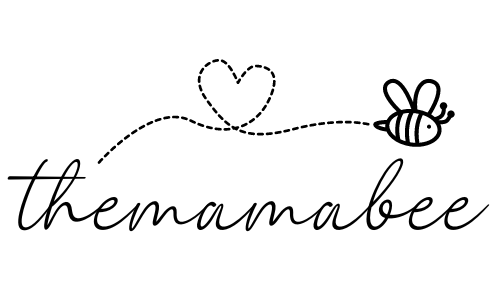Toddlers are notoriously known for their tantrums. That is why they have a name for this stage – “the terrible twos” and “three-nager.” While there’s some truth to this, I refuse to succumb to the notion that toddlers are inherently naughty. As Dr. Becky Kennedy says, the author of Good Inside, children may display bad behavior, but they are never inherently bad. This means children by nature do not have malicious intent. Once we adopt this perspective, it’s much easier to shift our parenting approach to better understand and get curious about our child’s behavior.
Do toddlers have tantrums? Most certainly.
Do toddlers have big feelings? They sure do.
Do toddlers test your patience more than ever before? Of course!
The toddler stage comes with its unique challenges, any parent will admit this. To get through this stage as peaceful as possible, it takes a lot of patience and understanding from the parent.
I recently read the book, How to Talk so Little Kids Will Listen by Joanna Faber and Julie King. It’s an excellent book, full of practical tools on how to deal with most situations you will likely encounter with your toddler-age child. While the book provides practical tips, the one thing that is missing is how parents can take care of themselves so they can remain calm and grounded in moments of stress and intense emotions.
This article will provide five practical ways you can remain calm and present during your toddler’s meltdown. Because let’s be real here, those moments are TOUGH.
I’ve been there. You’re eating at the dinner table with your toddler trying to enjoy your meal. And then your toddler starts throwing a fit about how their apple wasn’t cut the right way. Or perhaps they aren’t a big fan of the dinner you prepared so they start smashing it all over the dining table. Soon enough, this then spirals into a tantrum and full on meltdown. Nothing is going right.
The last thing you want is to get into a battle with your child so you try to appease them. You give in to their every demand. But it’s still not good enough. Nothing seems to please them.
One lesson I took away from Dr. Becky’s podcast is: our jobs as parents is not to make our children happy.
This was mind-blowing for me to hear. I had always thought the measure being a good parent is raising a happy and healthy child. But in reality, we are human beings with a wide range of emotions. And these emotions are meant to be felt. Allowing your child to go through and process the full range of their emotions builds resilience, which is an important skill to have in regulating their emotions that they will take with them through adolescence and eventually into adulthood.
So how do we do this?
There are a few different techniques, but the first step starts with us managing and regulating our own emotions. Once we recognize our triggers, it becomes easier for us to guide our kids manage their emotions from a place of peace and love.
Below are a few ways you can stay calm and centered during your toddler’s meltdown.
1. Step away and have your partner (or another responsible adult) take over.
It can be hard to step away when your child is in the middle of having a tantrum. But if your emotions are running high and you’re feeling easily triggered, it’s okay to give yourself the permission to take a break for a breather until you’ve calmed down and can reconnect with your child. You can calmly and firmly tell your child “I understand you’re having a hard time right now. Mommy is also having a hard time and needs to step away for a few minutes to process my feelings. I love you and I will be back soon.” I’ve had to do this a few times with my 2-year old son when he was constantly demanding something from me and I couldn’t fulfill his need. I felt like I wasn’t being my best self for him and I would eventually blow up on him in a way that I would regret so I would step away to another room and tell my husband I needed 5 minutes to myself. Although my son would cry even harder when I left, it allowed me to recollect myself and come back to him from a place of calmness.
2. Ask your child if they would like a hug.
Sometimes when toddlers are having big feelings, they may need some space and time to process their emotions, just like us adults. If there’s a good moment for it, you can offer a hug to your child. Respect their response. If they say “no”, you can respond with “That’s okay. Let me know when you’re ready. I’ll be here for you.” Letting them know that you’re there for them even through those tough feelings can make all the difference. And if they accept your hug offer, that’s a great moment to reconnect with your child and be present with them as they let out their feelings. Creating a safe space for them to process their feelings will enable them to come to you again in the future when they have those big feelings.
3. Sit down and be present with your child.
Similar to #2 above, coming down to your child’s level and being present with them as they experience the rollercoaster of their emotions sends an important message. It tells your child that you see them and you recognize them. It lets them know that you’re there for them even through the hard moments. And being in silence with your child opens up the space for them to process their feelings and sit with them.
4. Find a relaxing activity to do with your child. Drawing, coloring or playdough are all great options.
Sometimes, a meltdown can be a sign that your child desires connection with you. Perhaps it’s been a long day for both of you and they desire a way to bond with you. Finding a relaxing activity such as painting or coloring is a great activity to recenter and still process those big feelings together. Simply suggest, “Hey, it feels like we both have had a long day. I have an idea. What if we both colored (or other activity) together?” Similar to the hug offer, remain calm and detached from their response. Respect their answer and don’t force them into an activity if they declined. If they say “no”, you can respond with “that’s totally fine. I’ll go ahead and start coloring myself. Feel free to join me if you would like to.” Again, it’s an open invitation. By giving an opportunity for your child to connect with you through a calming activity, this allows them to still process their feelings while being present with you.
5. Play calming music.
Music is medicine for the soul. It has the ability to provoke emotions in us. Playing some calming soothing music in the background or your child’s favorite lullabies can create a calming and nurturing environment. The goal isn’t to distract them from their feelings, but rather create space for them to feel their feelings in a positive and productive way. Music can also be calming for ourselves as parents. It allows us to create space between ourselves and the triggers that our child may provoke in us. Playing calming music is a win-win for both the child and parent during intense and stressful moments.
Toddlerhood is a rollercoaster of emotions. Toddlers will express the fullest range of emotions and you may feel like you’re going along for the ride. During this stage, it can be emotionally exhausting and triggering for parents. It’s important that parents are taking care of themselves and regulating their emotions first in order to be the best version of themselves.
If we remain calm and loving while setting clear boundaries for our kids, this will enable them to build resilience as they learn to navigate the range of emotions they experience. Setting an example for them and learning to be okay with the uncomfortable feelings as parents is the first step. If we, as parents, are not able to tolerate the highs and lows of emotions that our kids go through, how can we expect that of them? How many times have we seen parents give in to their child to avoid a tantrum? I’m not here to say that we shouldn’t let our child have what they want. It’s all about balance. But if we are giving them what they want from a place of desperation or from a desire to avoid a particular feeling, that’s when we need to look within ourselves and understand what’s truly triggering us.
I hope this article has provided a few ways for you to stay calm during those challenging meltdowns! Please share in the comments down below if you have tips on how to navigate meltdowns.


